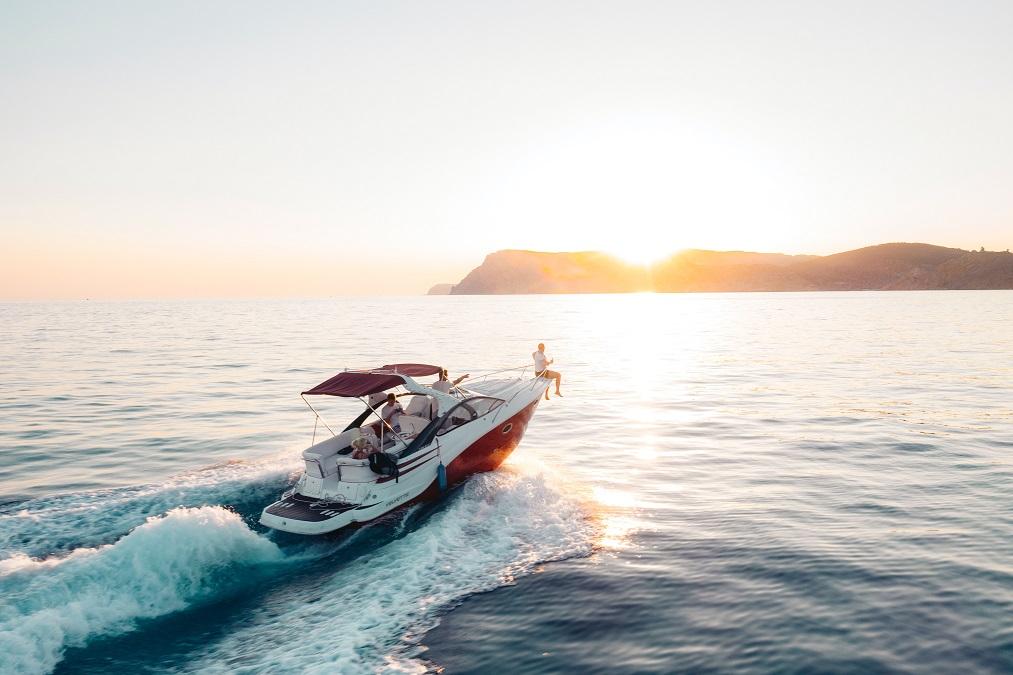All you need to know about buying a used boat
When compared to the cost of a new boat, a second hand boat can save you thousands of dollars. However, just like with a used car, you never know what you're going to get.
We're sure you can't wait to feel the water spraying in your face and the wind flowing through your hair now that you've decided on the type of boat you want. Ah! The pleasures of boating! Freedom, curiosity, and adventure are all aspects of boating that we all missed during the pandemic.
New boat sales are at an all-time high, thus inventory is limited. Used boats are a fantastic choice. But before you go out and get one, there are a few things you should know.
Registration and Title
Marinas are genuine enterprises, and any used boat they sell will come with a registration and title. If you're buying from a private party, though, insist on seeing a registration card and title with the seller's name and address. A boat trailer is no different.
Check that the registration numbers correspond to the vehicle's make, model, and hull identification number (HIN). If you wish to finance the purchase, you'll also need them then. Also, ask for and maintain a bill of sale signed by the boat's owner. If a warranty is offered, make sure it is described accurately.
Hull
The hull is the most important portion of a boat, therefore inspect it thoroughly. Examine it for flaws, dents, gouges, holes (repaired or not), and other anomalies like apparent fibreglass repairs. Check the area below the waterline, which could be damaged by hitting rocks, debris, or other boats.
Wood transoms (the vertical portion at the back of the boat) on older boats can rot internally. A weak or damaged transom is usually indicated by excessive movement when pushing the motor up and down or forward and backward. Any break or repair that is more than two inches long could suggest that the boat has been in an accident. A structurally solid hull is critical to your survival.
Deck
Conduct a thorough examination of the deck. Please take your time. Look for signs of decay, such as cracks, dents, holes, or soft patches. When you press down on the deck with your hands, it should not feel squishy.
Hidden damage may be indicated by signs of decay or plywood delamination. Examine the seats for signs of excessive wear, mold, or mildew. Inspect the rest of the boat if the hull and deck are in good condition.
Trailer
Many states mandate that boat trailers be inspected annually for safety. Check to see if the inspection sticker or placard is current. Inspect the suspension and brake systems for rot, corrosion, twisting, or extreme rust. Look for dry rot, bubbles, and gouges in the tyres.
Remove the wheel bearing grease caps if at all possible. A milky hue suggests water entry into the bearing hubs, while silver bearing grease indicates wheel bearing deterioration.
Engine
The engine is by far the most expensive component of the boat, therefore inspect it thoroughly. Look for corrosion under the engine cover first. Start the engine to see how it works. Request that the owner drive it for at least 10 seconds at full power. If the engine is loose, smoking, running rough, or noisy, there is a problem.
Check for deterioration, fraying, or cracks in the belts and hoses. To check for grit, dampness, or metal dust, rub a little engine oil between your fingertips. Consider hiring a boat engine mechanic to evaluate the engine(s) or perform a fluid analysis test if you're considering purchasing a larger boat. A fluid analysis could help you avoid future problems that are difficult to solve.
Battery
Batteries have a lifespan of roughly five years. Examine the terminals of the battery(s) for corrosion and search for a broken or leaky case. Also, double-check that the battery(s) are firmly fixed in the battery tray. A short circuit caused by an unsecured battery might result in a fire or explosion.
Starter motor
The engine will not spin if the starter motor is defective. When starting the engine, listen for clanging, grinding, or a loud spinning/whirring noise. Water that enters the starter and cannot drain causes internal components to rust and fail.
Electronics
It's fairly common for a boat to have electrical issues. The majority of these can be simply remedied. Electronic components, on the other hand, such as radios, GPS, radar, flickering lights, and electronic shifter/throttle, all indicate a wiring or electrical system failure.
Examine wires for melted or damaged insulation, corroded electrical connections, and too many splices where wires have been repaired. These could be indicators of something more serious.
Bellows
Bellows, which look like accordion pleats and shield control cables, mechanical systems, and other boat parts from dirt, debris, and water incursion while allowing them to move freely, are made of rubber. When expensive pieces are damaged, they fail fast or allow water into the boat, similar to an automotive constant velocity (CV) joint boot. Near the end of the bellows, look for cracks, splits, loose clamps, or corrosion.
Hardware and cables
Many systems on a boat can be controlled using cables. Check that all cables and controllers for the shifting, steering, and throttle systems are free of rust and fraying.
Repairing or replacing deck hardware can be costly. To ensure that the seats are securely fastened in place, shake them and pull on the hinges, rigging, and cleats. Loose or stripped screws can produce wobbly parts, which are easily repaired. Corrosion or loose hardware, on the other hand, could suggest hidden rot or other deterioration.
